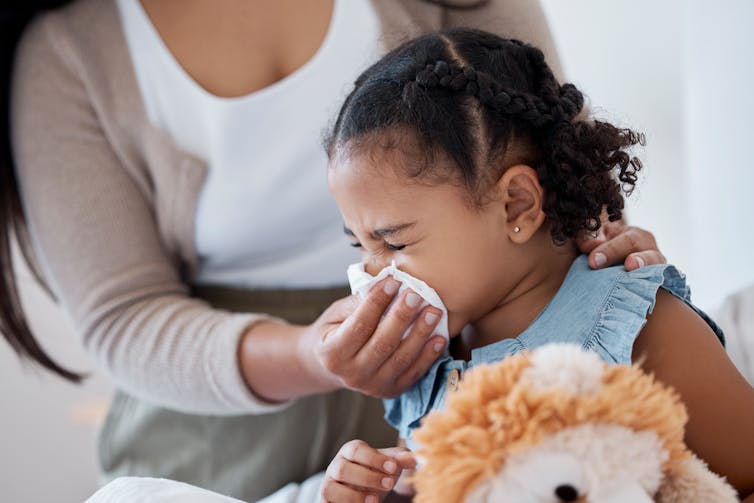hMPV may be spreading in China. Here’s what to know about this virus – and why it’s not cause for alarm
- Written by Allen Cheng, Professor of Infectious Diseases, Monash University

Five years on from the first news of COVID, recent reports of an obscure respiratory virus in China may understandably raise concerns.
Chinese authorities first issued warnings about human metapneumovirus (hMPV) in 2023, but media reports indicate cases may be increasing again during China’s winter season.
For most people, hMPV will cause symptoms similar to a cold or the flu. In rare cases, hMPV can lead to severe infections. But it isn’t likely to cause the next pandemic.
What is hMPV?
hMPV was first discovered in 2001 by scientists from the Netherlands in a group of children where tests for other known respiratory viruses were negative.
But it was probably around long before that. Testing of samples from the 1950s demonstrated antibodies against this virus, suggesting infections have been common for at least several decades. Studies since have found hMPV in almost all regions in the world.
Australian data prior to the COVID pandemic found hMPV to be the third most common virus detected in adults and children with respiratory infections. In adults, the two most common were influenza and RSV (respiratory syncytial virus), while in children they were RSV and parainfluenza.
Like influenza, hMPV is a more significant illness for younger and older people.
Studies suggest most children are exposed early in life, with the majority of children by age five having antibodies indicating prior infection. In general, this reduces the severity of subsequent infections for older children and adults.
In young children, hMPV most commonly causes infections of the upper respiratory tract, with symptoms including runny nose, sore throat, fever as well as ear infections. These symptoms usually resolve over a few days to a week in children, and 1–2 weeks in adults.
Although most infections with hMPV are relatively mild, it can cause more severe disease in people with underlying medical conditions, such as heart disease. Complications can include pneumonia, with shortness of breath, fever and wheezing. hMPV can also worsen pre-existing lung diseases such as asthma or emphysema. Additionally, infection can be serious in people with weakened immune systems, particularly those who have had bone marrow or lung transplants.
But the generally mild nature of the illness, the widespread detection of antibodies reflecting broad population exposure and immunity, combined with a lack of any known major pandemics in the past due to hMPV, suggests there’s no cause for alarm.
Are there any vaccines or treatments?
It is presumed that hMPV is transmitted by contact with respiratory secretions, either through the air or on contaminated surfaces. Therefore, personal hygiene measures and avoiding close contact with other people while unwell should reduce the risk of transmission.
The virus is a distant cousin of RSV for which immunisation products have recently become available, including vaccines and monoclonal antibodies. This has led to the hope that similar products may be developed for hMPV, and Moderna has recently started trials into a mRNA hMPV vaccine.
There are no treatments that have been clearly demonstrated to be effective. But for severely unwell patients certain antivirals may offer some benefit.
Why are we hearing so many reports of respiratory viruses now?
Since the COVID pandemic, the pattern of many respiratory infections has changed. For example, in Australia, influenza seasons have started earlier (peaking in June–July rather than August–September).
Many countries, including Australia, are reporting an increased number of cases of whooping cough (pertussis).
In China, there have been reports of increased cases of mycoplasma, a bacterial cause of pneumonia, as well as influenza and hMPV.
There are many factors that may have impacted the epidemiology of respiratory pathogens. These include the interruption to respiratory virus transmission due to public health measures taken during the COVID pandemic, environmental factors such as climate change, and for some diseases, post-pandemic changes in vaccine coverage. It may also be the usual variation we see with respiratory infections – for example, pertussis outbreaks are known to occur every 3–4 years.
For hMPV in Australia, we don’t yet have stable surveillance systems to form a good picture of what a “usual” hMPV season looks like. So with international reports of outbreaks, it will be important to monitor the available data for hMPV and other respiratory viruses to inform local public health policy.
Authors: Allen Cheng, Professor of Infectious Diseases, Monash University





